#Arundel tomb who
Text
"a sad old man once told me that what survives of us is love"... oh I was so sure I'd heard this in a doctor who episode before. but NOPE. it's just a reference to the only poet I hate so much I plan on fistfighting him in hell
#it's from a poem called the arundel tomb by phillip larkin#unfortunately for my sanity i have BEEF with this man#although i will admit he is a good poet. i just also want to kill him#lina lore#doctor who#doctor who spoilers#fifteenth doctor#philip larkin#spoilers#boom
40 notes
·
View notes
Text
Being forced to study Philip Larkin at A Level was worthwhile actually because when the doctor said "what survives of us is love" I knew exactly who that sad old man was and I could even name the specific poem.
20 notes
·
View notes
Text
so Boom was absolutely foreshadowing the Master coming back right
#doctor who#doctor who spoilers#the skye boat song...#but also I think the last line of the episode has to do with it to- quoting from An Arundel Tomb by Philip Larkin#a poem about a deceased Earl and Countess#and how what survives of them is their love#and what will be remembered of them is their love#that coupled with using skye boat song#like... of course we KNEW the Master was going to be coming back because of the Toymaster's tooth and everything#but I feel like its being spelled out more here#kdsjfhdskjfhskd im gonna go CRAZY
7 notes
·
View notes
Text
can't believe the doctor quoted PHILLIP LARKIN at the end of boom. you know. the guy that wrote 'they fuck you up your mum and dad they don't mean to but they do'. rtd give me the doctor x larkin episode u coward. anyway i'm sure this had nothing to do with the Themes of the season so far. i'm sure its Fine.
#doctor who#an arundel tomb isn't even an especially cheerful poem#i like it but larkin's a cynical old bastard still#they fill you with the faults you had#and add some extra just for you!
5 notes
·
View notes
Text
sorry going fuck wild about 15 referencing ‘a sad old man once told me, what survives of us is love’ quoting philip larkin’s ‘an arundel tomb’ but the whole quote is “… to prove / our almost-instinct almost true / what will survive of us is love”… our almost but not quite true instinct is that love survives us all - we don’t know what survives us, and we will never know what survives us. a stone effigy can never be fully accurate to the love that may or may not have proceeded it, or so the poem says
but of course, this is doctor who - love is what survives us all. of course, he’s a sad old man (aren’t they both?) and we know, and the doctor knows, that love does survive us all… dad to dad, dust to dust…. clara’s half a heartbeat… burning up a sun just to say goodbye… in the doctor’s experience, of course it’s true - what survives of him is love, every single time
#doctor who#dw spoilers#doctor who spoilers#dw boom#fifteenth doctor#ncuti gatwa#ncuti!doctor#i BLURTED out ‘PHILIP’???? as soon as the line was said
178 notes
·
View notes
Text


I can't be the only one who thinks the Doctor quoting from Philip Larkin's An Arundel Tomb is a reference to Amy and Rory, right? Moffat loves his intertextuality, after all.
#doctor who#boom#fifteenth doctor#amy pond#rory williams#steven moffat#is this a reach?#perhaps but i'm desperate#matt karen arthur return when?#philip larkin#steven moffat when i catch you#ncuti gatwa#dw#s14e03 boom#doctor who spoilers
30 notes
·
View notes
Note
Hellloo Haitch! I hope you had a relaxing weekend
<33
Onto the questions—
1) From the JJK villains, who would you trust enough to save them as your speed dial/ emergency contact?
2) What type of drunk are you? (The sad drunk, happy, affectionate, angry etc) Do you have any Drunken habits? What type of drunk do you think Mr. Haitch is? Does he have any drunken habits?
3)Any memory of yours that you find embarrassing but others recall as hilarious?
4) Favorite Seventeen songs? (mine are Falling flower and Happy Ending (Korean ver)
5) Any antics of your kids that you find adorable? (Recently my little cousin turned one. And she has learnt how to debate lmao. It’s so fun to see her shaking her finger, slamming her hands on the table, and yell around in gibberish, arguing with her parents. She even “walks out” of those arguments and slumps to the floor with her milk bottle, giving her parents judgey looks and mean side eyes. I love her, she’s so sassy XD)
6) Your favorite poem(s) of all time? (Mine are Raven and Annabel Lee by Edgar Allen Poe and Stopping by the woods on a snowy evening by Robert Frost)
Thank you as always for your time
Much love xoxo
Hellooooo! Mostly relaxing. But I ate too much, eirghhhhh. Now my tummy is ouchie.
Assuming they're on my speed dial because we at least like each other...Hanami. I don't think they'd say anything over the phone, but I think the love that I give me houseplants would at least endear them to me a little bit.
The handsy drunk. Drunk!Nanami is in fact based on me, not Mr.Haitch, who is a gentleman. Mostly.
I tried to frogleap a bollard in a pencil skirt when I was at school. I went at it at great speed, and flipped over at great speed. I fucked up my shoulder, but it's earned me a nickname which follows me even now.
Falling Flower is also my favourite! Twinnies.
Our eldest pulls his trousers/shorts all the way up to his nipples, and walks around bow-legged with a gurning face. Our middle one pretends to be a cat, to great accuracy. Our baby plays 'dentist' and tries to inspect our teeth, with two whole chonky baby hands in our mouths.
jfc. My favourite of all time, is Stopping By The Woods on a Snowy Evening by Robert Frost 🥲 and An Arundel Tomb by Phillip Larkin.
Very much love, thank you for your patience ❣️
Love,
-- Haitch xxx
7 notes
·
View notes
Text
The Achilles Heel of Fodlan's Most Fantastic Weapon - Analysis & Theory.
As a mere concept, futuristic missiles showing up from nowhere in a medieval-western fantasy setting like Fire Emblem makes for some pretty neat spectacle. In Three Houses, though? This unfortunately comes with some questions left unanswered, forcing people (like me) to come up and find answers of our own. So after considering what 3H tells the player about these fantastic weapons, as well of our current world’s (known) weapon development, I think I might have finally stumbled across why, as cool and seemingly overpowered the “Javelins of Light” appear to be, are ultimately highly impractical pieces of tech which should honestly get whoever worked on them fired.
I feel I must stress however, that at the end of the day, no matter how much in-game evidence I used to back things up, a portion of this analysis should fall into the theory spectrum. Also, I’m not a weapon/missile expert by trade, so there’s that.
So without further ado, here’s the introduction to our topic at hand:
What are the “Javelins of Light”?

Live footage of the things in action.
In Three Houses’ Fódlan, the “Javelins of Light” are “those who slither in the dark” ‘s trump card; highly destructive yet suggested to be impractical (more on this later) missile-shaped objects that fall from the sky and explode upon impact.
Lore-wise, the Javelins of Light - or Pillars of Light, as the Agarthan that wrote Romance of the World’s Perdition (found in the DLC Shadow Library) calls them - are mentioned to have been built by the civilization of Agartha over 1000 years before the main story, for the purpose of killing Sothis. And in spite of all the destruction and death caused, they weren’t enough to do the job, forcing Agartha’s survivors to flee and hide as Sothis erased their civilization from the map. Many centuries later - after Nemesis’ defeat, but before the War of the Eagle and Lion -, “those who slither in the dark'' attempted to use the javelins to blow up the Holy Tomb, but were redirected thanks to a spell Sothis had placed in the area which disrupted their trajectory, blowing up Ailell instead and turning it into Fodlan’s equivalent of Lethal Lava Land.
Afterwards, TWSITD refrained from using them ever again… For a few more centuries at least.
in the Verdant Wind & Silver Snow routes, the trump card returns once the story mission that takes place in the Empire’s Fort Merceus is beaten, blowing up the fortification to smithereens just as Byleth’s faction luckily avoids the danger by chasing the Death Knight (who was all to aware of what would happen, luring the gang on purpose). After Edelgard’s death, Hubert reveals post-mortem that he detected the exact moment when the sorcery triggering the missiles was used, and somehow used that to find the Agarthans headquarters, which he discloses in a letter. And once Shambhala is invaded and Thales (TWSITD’s boss) is defeated, as a last resort, the dude summons multiple missiles to destroy his enemies, but fails due to Rhea literally tanking some them for Byleth and his crew, causing Thales to die from random debris, and Rhea to be wounded lethally (whether she dies or not in SS depends on the player’s choices).
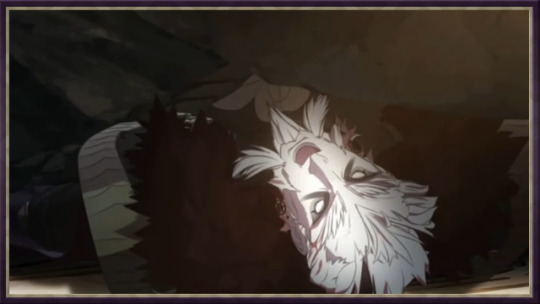
This shot will never not crack me up. Honestly.
In the Crimson Flower path, Thales - masquerading as Edelgard’s uncle, Lord Arundel - arranges a few javelins of light to drop on the Kingdom’s Arianrhod as revenge once he gets the confirmation from Edelgard that Cornelia’s death - in truth, Cleobulus and an Agarthan plant - was fully intentional, and the choice of words used (“I will be praying [...] that the Empire will not become another Arianrhod”) make clear his move was meant to be a deterrent against future backstabs. Given how Edelgard quickly covers up the event and later unleashes the Imperial army over the Agarthans sometime after dealing with Rhea and the Kingdom anyways, Thales’ gambit ultimately ends up being for naught.
Lastly, no javelins of light are ever used in the Azure Moon branch, though incidentally, it’s also the only non-Edelgard route which kills Arundel before Byleth’s chosen faction makes their way to Fort Merceus…
…Oh, and as far story-purpose goes, in Verdant Wind and Silver Snow, they’re used to having Byleth and co. go to Shambhala, while in Crimson Flower they’re used to explore further Edelgard’s relationship with the slitherers.
The Implications Behind the Trump Card
First, let’s go over what the game suggests about the things which make them so damn impractical:
Two routes point out that the weapons can't be abused at their leisure. For what’s worth, TWSITD blows up Fort Merceus in Verdant Wind and Silver Snow only because they were confident Byleth and co. would be there, and not to mention, both Hubert and the Death Knight knowing it would happen all but states Byleth’s group was intended to be killed there).
The only other instances where the “pillars of light” are used rashly are either because: 1. Thales has been cornered and has nothing left to lose (VW/SS): and 2. Thales is visibly pissed over his “pawn” killing his spies like nothing, and is trying to exert some control over her (CF). This stands out a lot given the Agarthans have a serious problem of hubris clouding their judgment at times, so seeing them being so careful with their usage implies a lot of how much they value them.
Thales has exclusive access to them: He’s seen summoning them in Shambhala in the Verdant Wind and Silver Snow routes; in Crimson Flower, he alludes something will befall Arianrhod upon finding out the circumstances behind Cornelia’s death - which turn to be the his trump card-; and in Azure Moon… Thales dies before everyone goes to Fort Merceus, and no missiles ever rain over the location. Thus, it would be criminal to ignore him entirely for his analysis given how much the story points out all the “javelins” employed are due to his will.
Whatever happened with Ailell was an exception, not the rule: Ailell by the time the plot takes place is a living wasteland of lava due to the “javelins of light”, and yet, none of the missiles used in animated cutscenes or even described in person carry this much destructive potential. Meaning, either Ailell was a dormant volcano before missiles fell on it, or the specific “javelins” used were, simply put, “built different“ and are no longer an option.
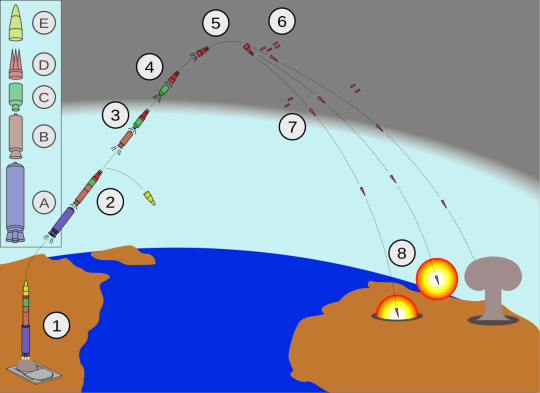
How a ballistic missile works, courtesy of Wikipedia.
By now, it goes without saying that the biggest criticisms the “javelins of light” have as a plot device, is that their weaknesses are never openly addressed and just merely “suggested”, and that’s understandably an issue if one’s trying to convince beyond reasonable doubt that there’s a good reason why the slitherers use them so seldomly, and prefer to scheme and attempt to manipulate important people in Foldan instead.
So in the end, how do we prove these fantastic weapons have an achilles heel at all? Well, I think we can reach a highly likely (yet ultimately theoretical) answer to this dilemma… By answering yet another question:
What truly are the “Javelins of Light"?
I’ve seen many, many people call the “javelins of light" online as nukes or ballistic missiles/ICBMs. But given what in-game evidence we have, both proposals just can’t be true:
First, and as previously mentioned, none of the weapons deployed in the present ever reach a comparable amount of destruction to a nuke, and Aillel’s aftermath being such a peculiar case makes it more of an exception rather than the rule of thumb.
And second, none of the missiles are even seen being launched from the ground. In all cutscenes they appear, the first thing that pops up are purple rings, which are then followed by the “javelin” falling through the path those rings set for it. This happens even near Shambhala, where one would otherwise expect them to launch from the ground if we go by the assumption these are indeed ordinary ballistic missiles/ICBMs Hubert used to find Shambhala’s location through analyzing their trajectory…
How a ballistic missile works, courtesy of Wikipedia.
In turn and, by process of the elimination, this leaves us with one kind of missile that fits behavior of the Javelins of Light to a tee, which as of this post, is still just hypothetical.
The Kinetic / Orbital Missile.
The idea behind them is simple; have missiles fall from the sky anywhere you would ever want, and let the kinetic force - AKA, the fall - do most of the job. And not only that, these can be - design wise - as simple as a giant pillar as a result, leading many people to nickname this idea as “rods from god” due to the weapons being seemingly launched from the heavens themselves. Sounds familiar?
If all this sounds too good to be true, then that’s because it is. As stated before, the concept behind this type of missile is still - currently - just an idea due to the logistics behind them being nothing short of a nightmare. Most importantly for the topic at hand though, a key step in setting them up involves sending them to space first, so they may later be launched from a satellite or something floating in the atmosphere.
And it’s right here where 3H’s lore screws the Agarthans hard, as the only existing reports where there’s anything remotely hinting the missiles were launched from the ground at some point (knowingly, implied, or otherwise) comes from “Romance of the World’s Perdition”:
"The False God must be defeated before the world sinks into a watery grave. To this end, the children of men have erected pillars of light upon the land. Thinis, Malum, Septen, and Llium were utterly destroyed. Those lands have vanished from this world. Yet even still, the False God stands. And soon, a flood aptly named Despair will drown this world."
As a quick reminder, this book is pretty much a relic from the era the Agarthan civilization that existed over 1000 years before the main story, as all of the cities being blown up mentioned in the book no longer exist in Fodlan. The missiles clearly were once on land before, but not anymore, given how they always drop from the sky…
The Achilles Heel of the “Divine Retribution”
In the end, with all the evidence at our disposal, I believe it’s possible to identify - to a theoretical level at least - why the “Javelins of Light” aren’t truly a “press the button to win” for the Agarthans. This achilles heel is split into 3 key points:
Finite number: If TWSITD doesn’t have the means to send new “pillars” into space, then logic dictates they just simply have a very finite number of missiles they’re forced to work with, so it’s best to make every one of them count. After all, if they had found a solution to the javelin problem (which didn’t give away the location of their HQ so blatantly, like teleporting them through magic or something), chances are they would have already used it.
Thales: Besides being the one that calls the shots on the javelins used, people often forget that the dude at his core is a schemer, not a fighter. Unless you really force his hand/piss him off, he will give the missiles the most strategic use possible, and will refrain from abusing them if he sees value in other methods and ideas, such as in CF where he wants to keep his partnership with Edelgard and the Empire going post-war and even have her potentially conquer the world later (it never pans out, but it’s the thought that counts).
Garreg Mach/Holy Tomb has a jamming spell. Sothis did something to the area so it’s 100% invulnerable to missiles, thus forcing the Agarthans to come up with another way to get rid of the Church and Rhea. Incidentally, this is why Thales never uses the missiles during his final fights in both Scarlet Blaze and Azure Gleam routes from the Warriors: Three Hopes spinoff; because it would be a resounding failure.

Thales, probably having to remind his cronies every century or so why blowing up Fodlan up with missiles isn't an option.
So in Conclusion…?
Whatever FE game we get later down the line that puts similar emphasis to lore as 3H did really needs to be clear on why your antagonistic forces can’t brute-force their way into victory. Truth be told, It’s not a dealbreaker to me (more so once I figured all this out), but it definitely adds to the frustration and belief the Agarthans should not have been in Three Houses to begin with (which is easier said than done, but that’s a topic for another day…)
And like always, many thanks to those who have kept up with all this wall of text up until now! If I had to ask a question to y’all though, it would be something like: if you had the choice to change something about the “Javelins of Light”, what would it be?
#fe3h#fire emblem#fire emblem: three houses#those who slither in the dark#agarthans#javelins of light#orbital missiles#analysis#sort of theory???
23 notes
·
View notes
Text
people who take the last line of an arundel tomb out of context piss me off so bad like you guys will just an ignore the entire rest of the poem to be like "love wins! ☺️" SHUT UPPPP YOU DON'T GET IT...
#it's like you don't even care that time has transfigured them into untruth 😐😐😐😐😐😐#whatever. desperately need to reread my larkin collections over easter break
7 notes
·
View notes
Text
I noticed this bit of localization last night, from the “A form of grief” scene. Remember how Edelgard tells Thales how there won't be any salvation for his kind after what he did in Enbarr and Duscur, only for Thales to state it was done for her benefit? This is what the chrome translator gives me.
Flame Emperor: To those of you who have repeatedly committed terrible deeds in Duscur and Enbarr... Will there ever be any salvation?
Thales: Didn't you do everything to gain power?
I checked Thales' line with google translate as well, and it comes out the same. It makes it sound like gaining power is Edelgard's goal, while TWSITD's goal is stated to be the purge of Fodlan. Then I recalled another piece of localization, one that the Edelgard sub got really angry over when they had the route retranslated. Safflowers' end card stating:
“Imposing a strongly centralized authority, Edelgard started working on a reform that would dismantle the nobility. She set out to create a new world where no one would be judged on the basis of crests.”
Sure, Edelgard works to dismantle the nobility, but she also takes most of, if not all, the power for herself. She gained power through this war, while Thales's comment makes it out that this was her goal.
But then we get another piece of localization, where as the Flame Emperor Edelgard says she will “reforge” the world. Now reforging can mean to make something again, or to make something again differently. But the Japanese text is thus: I am the one who will return this world to it's original state. Edelgard wants to put the world the way it was before the War of Heroes, undoing the influence of the Church...except the Japanese text states that Fodlan was not unified. From the History of Fodlan:
The clans of Fódlan were not united, but simply robbed and killed each other.
Edelgard has been led to believe that the Church's teachings are a means to control humanity, who Nemesis was a champion of and while her ancestor was tricked and betrayed humanity. She was told this by her father, who Hubert says was a puppet of the Arundel and his group which is comprised of Kronya and Solon. The Elites viewed their Relics as “sacred,” which would indicate it was tied to whatever religion they had, while we're told the Agarthans thought to themselves as gods while they are shown viewing non-Agarthans as animals. This possibly includes their ally Nemesis, per Epimenides in English while the Japanese says he's descended from beasts but it's still held against him.
So Edelgard putting the world back to the way it was? Nope, that's not what she does. But there was another piece of localization, Edelgard's goal at the Holy Tomb where in the Golden Deer version she makes it clear she intends to use the Crest Stones, not destroy them like the English version says (though, she is still shown using the resulting Crest Beasts or is said to view them as war assets in Flower). Or how, since this is Verdant Wind, she says she wants to kill Claude and his allies since if she doesn't there won't be any righteousness in the world, rather than saying she must.
Also, since I'm looking this up... Edelgard's line to Claude comes out that she DOES NOT think Claude's ideals are like her own. After all, Edelgard invades other countries following the war according to Caspar's endings in order to force her ideals on them, Claude instead turns Almyra into a trading power to promote cultural exchange. Claude also uses the “path of supremacy” line against Hubert, aka calls out Edelgard's rule as hadou, whole the English calls it “military rule.”
Really, the Japanese is a lot more blunt. Edelgard seeks power through conquest so she can force her beliefs, beliefs based on what her Agarthan puppet of a father told her, onto others. That's her goal, why she did everything that she did in the game. From the moment you press New Game, Edelgard has already put a hit on her classmates so that she can gain power. Hopes makes it clear she knew about the plan to turn people into Crest Beasts, her opposition being it's practicality, but she lies about it to you in Houses because she wanted to sway you to her side. Her ideals turn her into a monster, literally in Azure Moon, and Safflower is called the path of the beast, the opposite of enlightenment.
And the English text downplays this. All of this. I've said before, this is worse than Fates because at least with Fates, you still understood what the story was saying. With Houses, things are changed in such a way that the messages of the game become blurry or undermined.
8 notes
·
View notes
Text
— alliances, part I.
Been meaning to delve into stuff like this for a while, but there's just a lot to unpack for a character like her. She holds a lot of knowledge pre-skip most others do not by virtue of her role in the game and her motivations. This is mainly going to be about Edelgard's complexity and views on the Agarthans. Mainly in terms of her knowledge, her reactions and thoughts, and how/why she forms a firm line between her army and their own.
She tends to foreshadow a lot in her speech pre-skip (mainly because she knows what's going to happen and all that), which is seen in some of the quotes I highlighted. Going to make some general bullet points, though.
Crest Stones: They've been seen already as being able to turn people into crest beasts, so Edelgard knowing this isn't strange. As such, she'll talk about it because there is both no point in hiding what's been seen/she hopes those who do see it will come to their own conclusions as to what they want to do with that information. She isn't interested in getting non-Fódlan people intertwined with her personal affairs. Them knowing this information won't influence her actions, but she can use it to deduce them as people. The war will be hers to fight, regardless. The crest stones are also substantial as far as the Heroes Relics themselves go, seeing as the two tend to go hand-in-hand. Aymr has one like the others. She's open about her disdain towards crests/the weaponry that propels said crests. In-game text also infers she already knows this prior to the general Black Eagle (in CF/SS's case) populace discovering it, like in chapter 5 when they see Miklan turn into one.
"Such is the fate of one whose life is corrupted by a Crest Stone... How pitiable. The least we can do is put an end to his suffering."
"Right or wrong, he was a gifted leader. He could have been a great asset to Fódlan. What a waste."
Unlike others' words in this scene, Edelgard's reaction is more subdued/implying this fate was unavoidable for him given what he was doing and she expected it. She knows before most that a person wielding a relic who isn't compatible with its crest will result in beasts. She calls it 'pitiable' not out of malice. A person's worth should not be dictated by whether or not they have a crest.
The Heroes' Relics: Fódlan history has the legendary weapons written down as things to be revered, used by the Ten Elites as gifts from the goddess. The Agarthans would know this isn't true because their kind was literally there and it's part of the reason for their forged alliance with Edelgard/the Empire in the first place. They as a whole do not tell her everything because there is emphasis in text numerous times how their factions are separate and the alliance will be broken once their mutual goal is achieved. Also, why would they reveal their entire hand to her? They wouldn't. Edelgard absolutely keeps a number of secrets, herself. It's an alliance forged on mutual needs, not trust. She's very smart and additionally comes to make her own inferences both due to her personal knowledge as well as her thoughts. In-game, when you visit the Red Canyon and Edelgard ponders its architecture, you can gain support points if you tell her that you think "a culture long since perished" used to live there. To which she replies:
"Heh, it's possible they weren't even human. Hmm, perhaps their remnants still influence this world."
She wouldn't say this if she had no reason for thinking that. Furthermore, Edelgard isn't the type to immediately believe everything she might hear from others. Let alone from a group she despises and can disguise themselves as her family (literally. See Arundel/Thales). She needs probable cause to believe it, hence why she examines what she receives. But I do think she also knows what the heroes relics are made of. The bones stuff. Another thing that makes me like to believe she knows this is just the way her army speaks about 'crest stones/bones' in the Holy Tomb. She is also the Imperial Princess and next Emperor, so it's not illogical for her to hold at least some knowledge others do not in the event it comes up and someone goes. How do you know this lol.
Herself: A weird point lmao, but the truth of what they did to her/her siblings is covered up both by them but also the empire itself. A 'plague' etc etc. If someone says that to her, she won't correct it because she doesn't want to talk about it, but she'll just silently grit her teeth together. She's never told anyone at present that she has a second crest, let alone the Crest of Flames. She loathes thinking about it nor does she care to share that with anyone (minus like. Hubert who is her close vassal but he canonically knows what she's been through and she trusts him). Her Crest of Seiros is public knowledge, though. But the fact that she and her family were taken under the palace with the primary goal of giving them the Crest of Flames is kept hushed. When she does choose to share it, she speaks with passion. See her C+ support with Byleth.
"I know how it all sounds. But when you see my true strength, you will know I speak the truth. I have kept it hidden all this time, but.. I will reveal to you the power of my second Crest. It is the same as yours.. the Crest of Flames. When it manifested for me, I swore a silent oath. For the sake of my family and for all the poor souls whose lives were traded for my existence. For their sake, I will build a world where such meaningless sacrifice is never again sanctioned. As emperor, I will change the world. I swear it."
Seeing as TWSITD obviously know this, I think they could also use it as leverage against her. Three Hopes shows this, but houses wise, there's always the looming threat of 'If you go against us, you will pay etc etc.' Her motives stem from this event- From the goddess not answering her pleas and everyone around her dying just for her to get more power. She muses about this often, hence the nightmares from it. It was not Edelgard specifically they sought at the time. Not until the crest manifested. A number of her siblings didn't even bear the Crest of Seiros. I feel like it's important too because this memory shows how she doesn't like working with them due to this pain they've caused but feels she must because she needs their power to usurp the church. This, coupled with how unsettled she feels each time they take the guise of someone she knows, compels her to stay her hand.
Aymr: It's first heavily implied in houses that this was made specifically for Edelgard by the Agarthans because it takes Agarthium to repair if you break it. Like I mentioned earlier, she knows what kind of weapon it is. Nobody ever questions her having this though because it just appears like any other heroes' relic, despite the empire generally lacking in them compared to the kingdom and alliance. She has Labraunda in 3 Hopes because she severed ties with them earlier than in houses. Plus like. When we do see her wield Aymr in Hopes at a point, Thales is with her. Aymr is a strong axe that allows her to channel her power and aid in her quest forward. It's not a 'gift' given as a peace offering or to satisfy her, but to satisfy their own needs. She is a weapon. If Edelgard is strong enough to take down the church, they are ever-closer to what they want. The axe is a way to destroy anyone who stands in her way.
They have also "given" her the Crest of Flames, but that ties back to what I wrote earlier about it coupled with the 'weapon' bit. She hates having 2 crests and doesn't want to become a puppet emperor like her father. It's talked about how having 2 is a heavy strain on one's body and shortens a person's lifespan, so this would apply to Edelgard as well. This lack of time is a strong motivator for her quick actions- Both on her end and the desire to not wait around anymore. But also, using the power of those 2 crests is daunting and strenuous. Edelgard is a proponent of people using their own power to cut a path forward, but given how she feels the people of Fódlan are blinded to the truth, she uses these abilities she has in order to force them to understand. If she does not, she feels the cycle won't end. She's strongly devoted to this goal and explicitly states it plenty of times.
The Flame Emperor: That is her own persona she uses pre-skip to protect her identity as she sorts out her plans, but the attire itself is from the Agarthans seeing the extensive technology and stuff. She's able to mask her voice with it, too. Until she can declare war, she must set her devices and act anonymously. Even when she does happen to speak to other people as FE, she does so declaratively. It's the truth she urges those to know.
After we see Kronya in-game, Edelgard will only speak to Kronya/Thales/etc in her Flame Emperor outfit if they are not using their 'disguises.' This is because Edelgard standing in plain sight with them is just. A red flag lol. I think it bothers her when they use those visages, and not just solely because it increases her distrust levels. Arundel was her uncle, someone she had went to the Kingdom with at one point in time. Pre-skip in houses, she does fight them at moments with her classmates when the times called for it.
Kronya: "Huh? What are you— Are you here to kill me?"
Edelgard: "I am. Prepare yourself for death while you still can."
Which still stands now. There is the fact that Edelgard knows what she is doing. Whenever she decides to dispose of TWSITD members prematurely, she needs to act cautiously. Even so, in certain circumstances, it's not only what is expected of her but also what she needs to do. She is cutting a divide between the Flame Emperor army and the Agarthans'. At least, from their perspectives. She wants to rid the Church of its power & system they've upheld for ages, but she also needs to dispose of TWSITD. Allowing them to fester is not completing her life's goals. It's a second war. TWSITD are the ones who caused the two-crest experimentation, controlling the empire from the shadows, etc. Her plans of war are already brewing when she enters the academy. She knows people will be surprised- Perhaps even hate her. If they flee to their home countries, that is all for the better. They don't need to get involved.
That being said, there's of course the sheer fact that they're providing her with extra military strength. Since they know her plans of war. This is obvious enough in houses, emphasized in hopes in her support with Hubert when she says "Besides, after breaking ties with him and his allies, we lacked the military capability to carry out an operation on such a scale." This is post-skip in Hopes so I don't want to deep-dive it rn, but the Agarthans hold a strength the Empire alone does not possess even pre-skip (which is why I included it mainly lol, just to show it's a thing). It is why she keeps her ties with them at the moment because not only is fighting against 2 armies at once difficult, but unreasonable to her at present. She loathes complicity, but she is super determined for this goal of a higher cause.
This alliance is made aware of by far and few in-between. She has no plans on telling anyone about it who doesn't already know. While I think she has the most correspondence with the group's leaders, it doesn't really matter who tells her what so I'm leaving it vague on purpose to allow for plenty of wiggle room. Their faction is bigger than even Edelgard knows, anyways. She doesn't know where they hide out nor even who they all are. She is around so many faces all the time, them included, but she must continue on in order to achieve results.
#( headcanons )#3h spoilers btw#this has been sitting in my drafts for 2 months lol#shoos it out of there
9 notes
·
View notes
Text
Episode 550 - Ron Rosenbaum
With the release of IN DEFENSE OF LOVE: An Argument (Doubleday), Ron Rosenbaum offers up a series of essays to save love from scientizers, extremists, the jaded, and anyone else who doubts whether Amor Vincit Omnia. We get into why love needs a defense and how it's not reducible to chemical surges on an fMRI scan, the overwhelming emotion of Linda Ronstadt's Long Long Time, the beauty of Philip Larkin's poem An Arundel Tomb and why Larkin may have been embarrassed by the honesty of its last line ("What will survive of us is love."), and the ways bullshit science can lead people ridiculously astray. We talk about seeing Tolstoy in the light of his late novellas, in which he puts forth an extinction agenda and wants to end human reproduction, the first and last times Ron fell in love, why he included a closing chapter on his own experiences of love & regret, whether dangerous passion outweighs a moderate marriage, and whether one can write about human nature without having a fully human nature. Plus, we talk about Ron's writing career, his arrival during the late days of magazines' golden age, how he discovered his superpower of close reading, why America's greatest love poems come from country music, and a lot more. Follow Ron on Twitter and listen to our 2013 and 2014 conversations • More info at our site • Support The Virtual Memories Show via Patreon or Paypal and via our Substack
Check out the new episode of The Virtual Memories Show
2 notes
·
View notes
Text
Also also, in other news, the Cutest Thing which is the effigy of Walter Bailloch and Mary, Countess of Menteith, in Inchmahome Priory
#Yes married couples were sometimes depicted in poses of romantic love as a generic pose that doesn't necessarily indicate real affection#But STILL#I see it I go aawwwww#Aggressive thirteenth century magnates and their heiress wives can still be cute#In a warped kind of way#Inchmahome is a beautiful spot already- and much associated with legends of Queen Mary and Robert Bruce#But this effigy I think is underrated as one of its greatest treasures#Arundel tomb who#(For real though the Arundel tomb is much more beautiful artistically but we have so little in Scotland let us have this)
2 notes
·
View notes
Photo
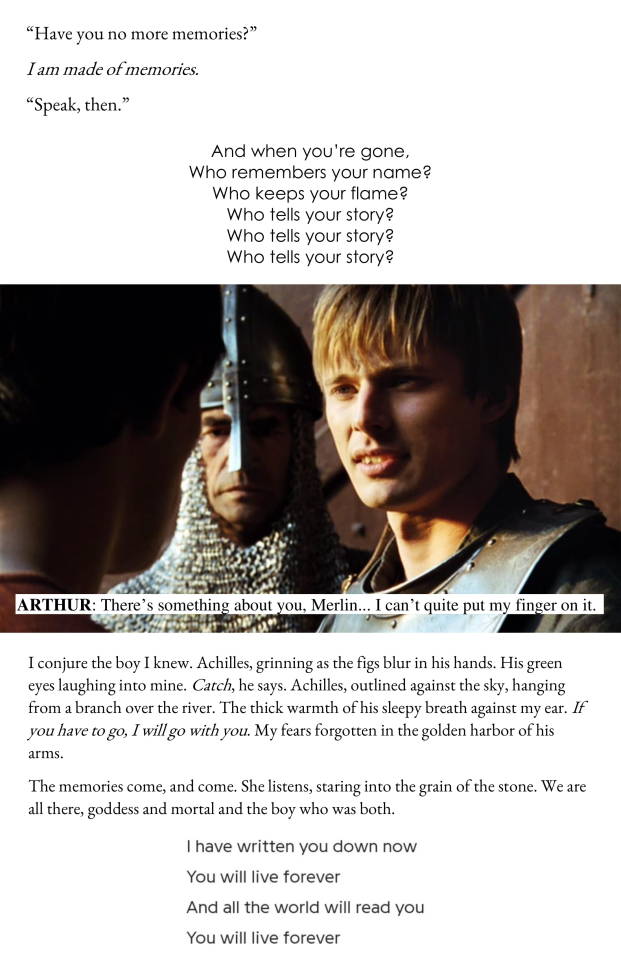
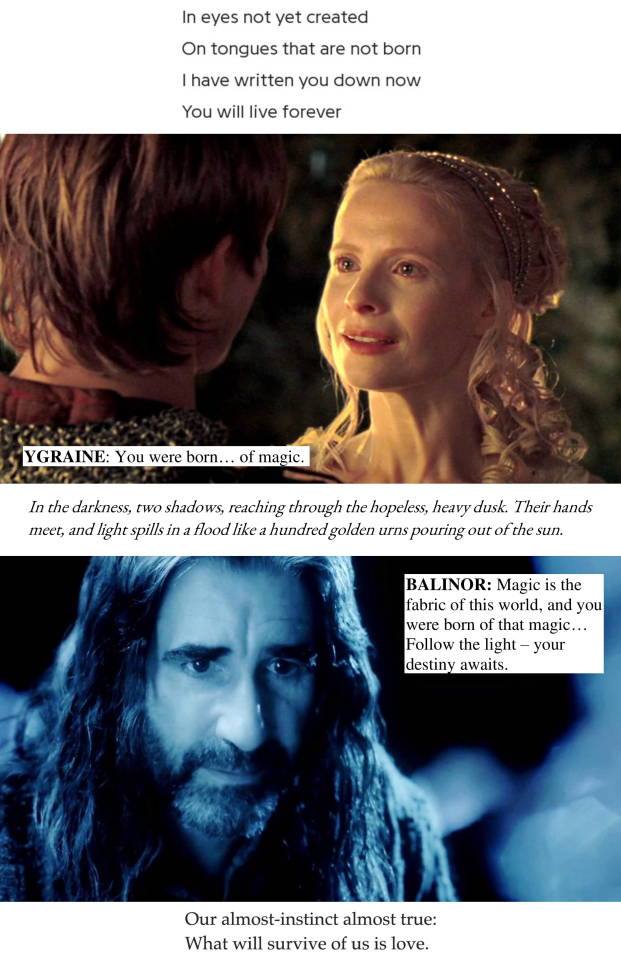
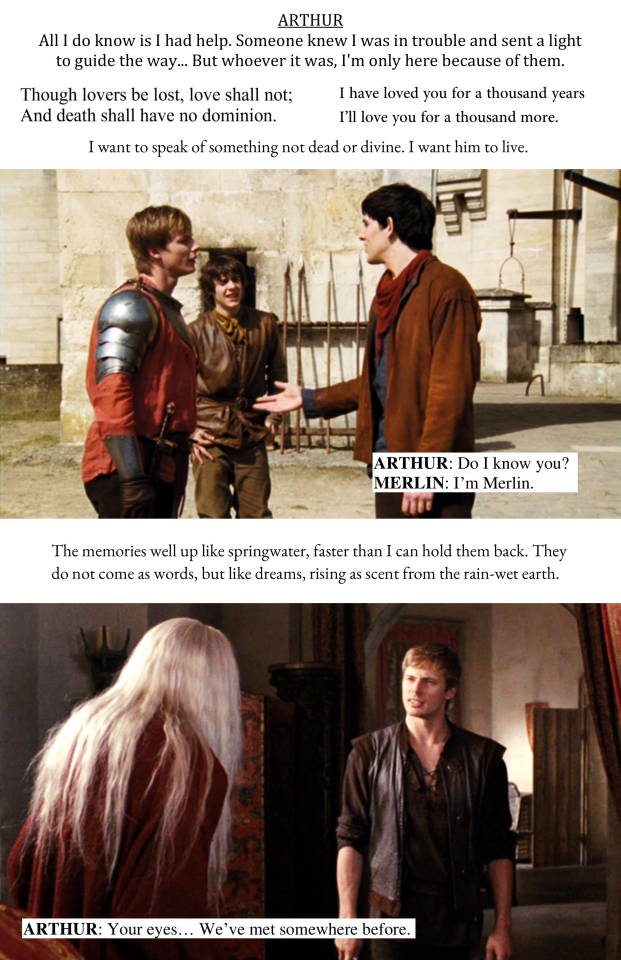
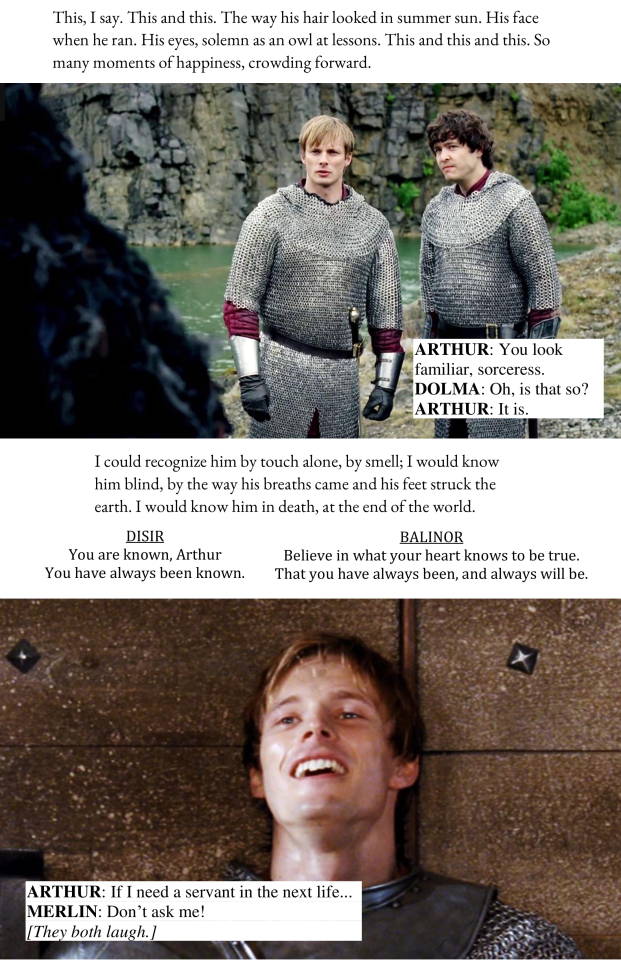
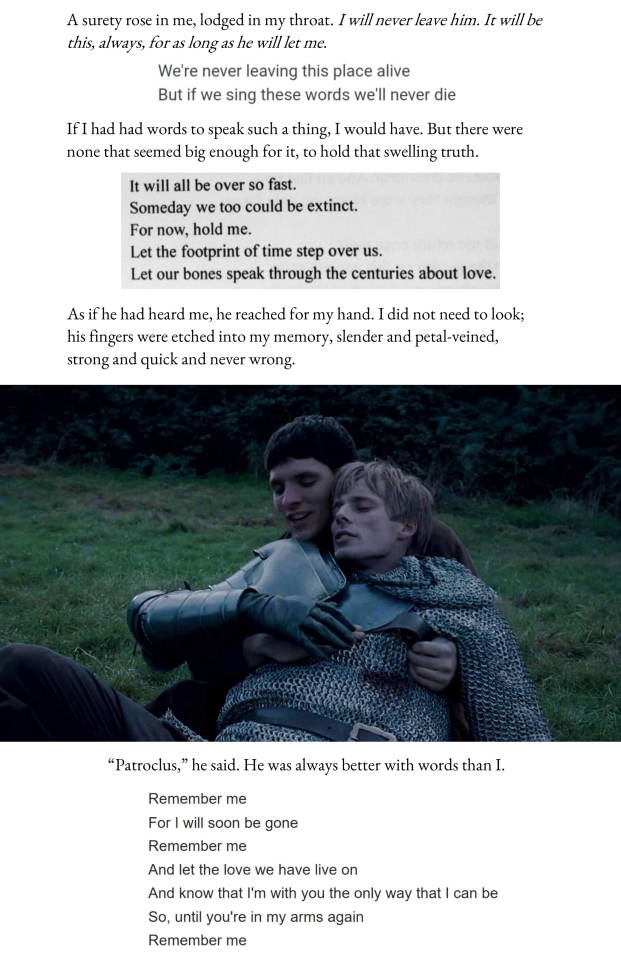
What will I do without you?
You will remember me.
bamf!merthur week | day 2: smart!arthur
the song of achilles // who lives who dies who tells your story, lmm // bbc merlin 1.01 // the song of achilles // poet, bastille // bbc merlin 2.08 // the song of achilles // bbc merlin 5.12 // an arundel tomb, phillip larkin // bbc merlin 1.04 // and death shall have no dominion, dylan thomas // a thousand years, christina perri // the song of achilles // bbc merlin 1.01 // the song of achilles // bbc merlin 3.10 // the song of achilles // bbc merlin 5.09 // the song of achilles // bbc merlin 5.05 // bbc merlin 5.12 // bbc merlin 2.12 // the song of achilles // save yourself, i’ll hold them back, my chemical romance // the song of achilles // unknown // the song of achilles // bbc merlin 5.13 // the song of achilles // remember me, coco
#bbc merlin#merthur#bamfmerthurweek2021#arthur pendragon#bradley james#colin morgan#merlin#web weaving#merlinedit#merthuredit#tsoa#patrochilles
699 notes
·
View notes
Text
@themidnightcircusshow‘s tags her reblog on this post about Henry V’s facehole made me realise I should write up some thoughts I’d been having about the facehole and the portrait. Henry V’s portrait depicts him in profile and it's usually been interpreted (i.e. by Ian Mortimer, Helen Castor, Michael Livingstone) that this profile view is designed to "hide" the scar and/or is "proof" that when John Bradmore said that the wound was "beside the nose on the left side (iuxta nasum ex sinistra parte)", he really meant his left, rather than Henry's left because the portrait shows his unblemished left side.
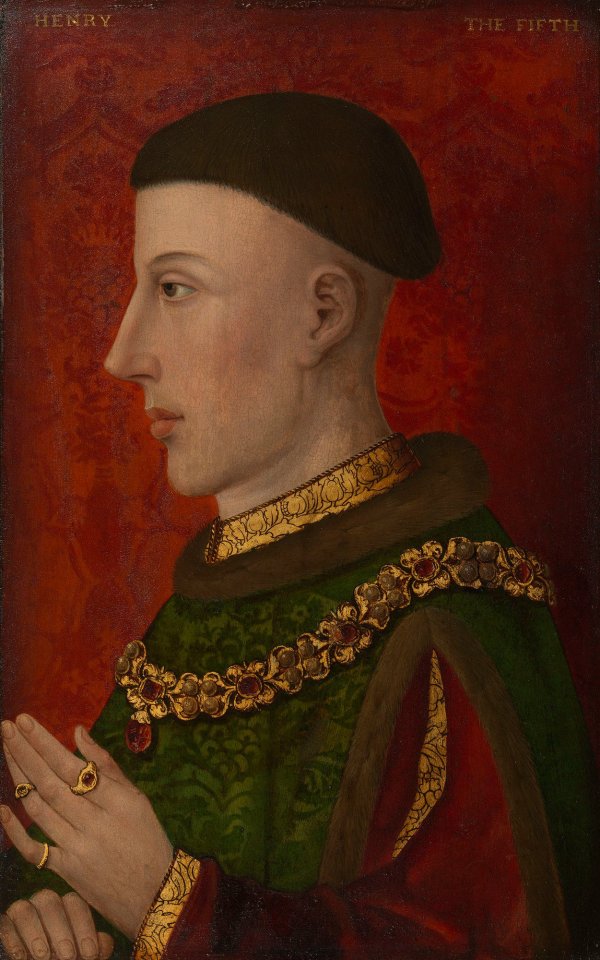
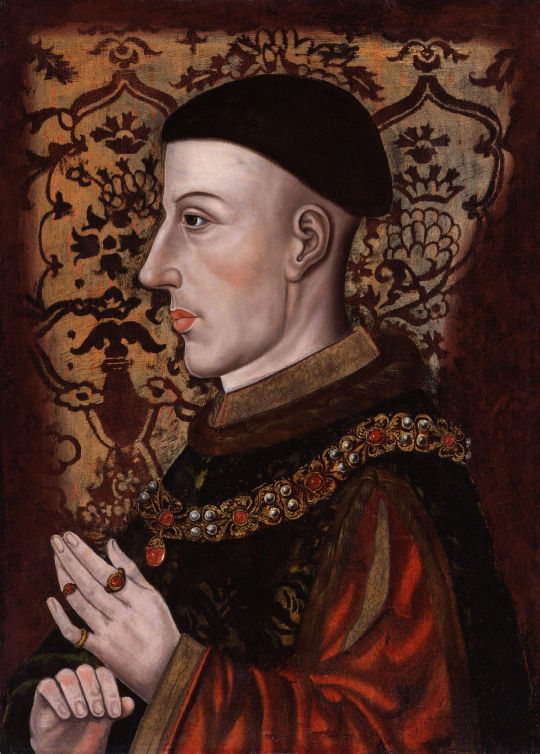
Image: two portraits of Henry V, depicting him in profile that shows the left side of his face. The one on the left (RCIN 403443) is in the earliest known portrait, made 1504 and 1520. The one on the right (NPG 545) is the commonly used portrait, made in the late 16th or early 17th century.
In comparison to other medieval portraits, this side profile view is notable. Richard II is presented face-on while the kings from Henry VI to Henry VII are depicted in three-quarters view (the "towel hat" portrait of Henry IV is a 16th century fake, no reliable likeness of Henry IV has survived outside of his tomb effigy).
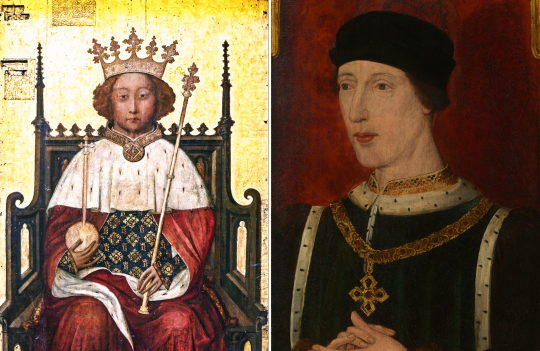
Images: The first is Richard II's "coronation portrait" located in Westminster Abbey. It is the only surviving contemporary portrait of a medieval king. Richard II is depicted facing the viewer front-on. Henry VI from the Royal Collection (RCIN 403442), dated 1504-1520, depicted in three-quarters view.
But the portraits of Henry V all date from the 16th century or later, copies of a now-lost work. This isn't unusual, given that that's true for all medieval kings except Richard II but notable because we do have some contemporary likenesses of Henry V and they show his face from different angles. For instance, manuscripts depictions frequently show his face in three-quarter view (some images shows him face-on) but also from different angles, suggesting they weren't trying to hide one part of his face.

Images: Two images of the then-Prince Henry receiving or gifting Thomas Hoccleve's "The Regiment of Princes". The first is from BL Arundel MS. 38 fol.30v and shows the Prince to the left a kneeling figure, either Hoccleve or John Mowbray, 2nd Duke of Norfolk. It was dated to 1411-1432. The second is from BL Royal MS 17 D VI fol. 40r and shows the Prince to the right of a kneeling figure, either Hoccleve or William FitzAlan, 16th earl of Arundel. It is dated to the second quarter of the 15th century.
Another (potentially? near?) contemporary image is the choir screen at York Minster which depicts all the kings since the Conquest up until Henry VI. It is generally believed to have been commissioned by Henry V but was completed in the reign of Henry VI so it might not be exactly contemporary to Henry. With this one, we can see his whole face and look, no scar, ma!

Image: The statue of Henry V from the choir screen at York Minster.
All of these images are fairly idealised, even generic images which does raise questions of how accurate a likeness they were. At the very least, Henry V probably did not have hair that floofy. None of them are the model for the side-portrait but more importantly, whatever part of his face is hidden or revealed, he is never shown with facial scarring. It's impossible to tell whether the more personalised of these likenesses really looked like him or, for the most part, who commissioned them and what instructions they gave the artist. It's interesting to note that the contemporary Versus rhythmici in laudem Regis Henrici Quinti describes him without mentioning any scar.
But it does suggest that people "dealt with" the scar by ignoring its presence, rather than acknowledging it or making efforts to represent him in ways that would hide the scar (which might actually draw attention to what he wished to hide - cf. how once we knew the seriousness of the wound, attention turned to how his portrait 'hid' it). Which suggests that Henry maybe didn't choose profile-view for his portrait for its ability to hide his scar.
So let's turn back to the portraits of Henry in side-profile. The earliest known portrait was made in 1504-1520. Frederick Hepburn's study of this portrait noted that although most of the costume is accurate, elements are anachronistic and perhaps inauthentic, such as the slashed sleeve (which came into fashion later in the 15th century) and possibly the pomegranate pattern of the cloth-of-gold doublet or undergown. He also noted that the positioning of the hands is strange. The first known examples of the hand posed with the finger curled come from the 1450s paintings of Rogier van der Weyden so it wouldn't be found in an image contemporary to Henry. The single left hand held up upwards is not seen elsewhere and the most similar gesture is both hands raised in prayer. He notes that some later copies of the portrait depict both hands joined in prayer while some other copies I've seen in Catherine Daunt's thesis remove the right hand altogether. He suggests that the hands are altered from the original.
The general consensus from art historians (including Hepburn) has been that the original image was a votive or donor portrait, showing Henry kneeling in prayer before a holy figure. Without the original portrait, it's impossible to know who this figure would be - it might be one of Henry's patron saints (his brother, John, Duke of Bedford, was depicted in the Bedford Hours kneeling to St George), the crucified Christ, the Virgin and Christ, or any other figures of devotion. Francis Minkus speculates that the original may have been placed at Henry's foundations at Syon, and may have served as inspiration for the seal of the Abbess and Convent of Syon. If so, the original portrait likely showed Henry presented to the Virgin and Child by St Bridget of Sweden.
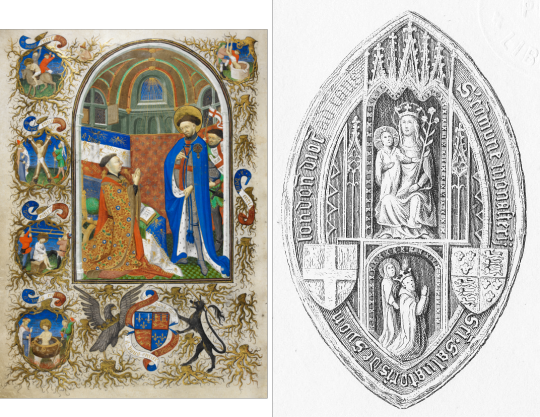
Images: The first image shows John, Duke of Bedford (Henry V's brother) kneeling before St George in the Bedford Hours (BL Add MS 18850, f. 257v). The second image shows an engraving of the Syon seal. On the top is the Virgin holding the infant Jesus, on the bottom is St Bridget presenting a kneeling Henry V. His hands are held upright in prayer. Flanking the bottom image are the arms of St George (left) and the arms of England and France (right).
On a similar note, A. J. Pollard suggests Henry's portrait might have deliberately the Wilton Diptych in homage to Richard II. While Pollard seems to be suggesting that the original portrait was just a portrait of Henry alone, I think it's more likely that it was a donor portrait and it may have been inspired by or modelled off the Wilton Diptych, possibly also serving the same purpose - i.e. the original was a now-lost portable altarpiece.

Image: the inside of the Wilton Diptych (NG4451). It shows John the Baptist, Edward the Confessor and St Edmund presenting a kneeling Richard II (his face in profile) to the Virgin and Child, surrounded by angels.
Or perhaps it was more like the now-destroyed wall-painting of Edward III, Philippa of Hainault and their children at St. Stephen's Chapel in Westminster Palace, showing Edward III and his sons presented by St. George to the Virgin and Child.

Image: Richard Smirke's copy of the the lost wall paintings of St Stephen's chapel, showing St. George presenting Edward III and his sons (1800-11).
The portrait we know probably is the result of the secularisation of the original portrait in the 16th century, perhaps for Henry VII's reputed collection of portraits of every king up to and including himself. Henry V's hands were almost certainly repositioned and it's possible that the background was changed too. Pollard suggested the original profile might have even been flipped - it seems more common for men to be shown kneeling to the left to the figure they're venerating though it's not unknown for them to kneel to the right. The original might have also had Henry wearing a crown that wasn't included since kings are shown wearing crowns in their donor images (cf. the chapel wall painting of Edward III, the Wilton Diptych, the Syon Abbey seal). All of this is unprovable since the original portrait, whatever form it took, however it depicted Henry, has been lost.
But if the original was a donor portrait (as seems likely), then the profile view of Henry is entirely conventional. It doesn't (necessarily) indicate a desire to hide his scar and may not tell us anything about where his scar was located or whether or not Bradmore confused his own left with his patient's left (which does seem a rather elementary mistake for a distinguished surgeon writing an account of what his most famous case). After all, none of the actual surviving contemporary and near-contemporary images of Henry show him in profile or from one accepted angle. It seems that Henry's (and his contemporaries')* preferred method of dealing with his scar in depictions, whether literary or artistic, was to erase it completely.
And none of this tells us how he coped with the scar in real life. Did he really ban people from looking him in the eye? I don't think that was actually feasible for the purpose of hiding his scar since his eyes aren't known to be affected by the injury. It might even make people look at the scar rather than his eyes. Did he just cope with people seeing it? Probably! The alternative is that he a) always wore a mask or b) went around, only ever facing people from his one good side. Seems a bit awkward.
* It's worthwhile noting that while the English chroniclers are predictably quiet about the scar, the French chroniclers are too. Even that account where Henry got pissed at the guy who looked him in the eye.
Sources:
Daunt, Catherine Portrait sets in Tudor and Jacobean England. Doctoral thesis (PhD, University of Sussex, 2015)
Hepburn, Frederick, Portraits of the Later Plantagenets, (The Boydell Press, 1984)
Livingston, Michael, ‘“The Depth of Six Inches”: Prince Hal’s Head- Wound at the Battle of Shrewsbury’, Wounds and Wound Repair in Medieval Culture (Brill, 2015)
Mickus, Francis, "Dieu et mon droit: The Context of Henry V's Self-Representation", The Fifteenth Century Conference (2020)
Pollard, A. J. Henry V: Pocket Giants (The History Press, 2014)
42 notes
·
View notes
Text
Spotlight on Transi Tombs, Medieval Memento Mori
*CW Death and Grief, obviously, Real-World Religion, Artistic Representations of Death and of Bugs, Worms, and Frogs
Because I have officially shown images of these on my page now I thought I would make a little blurb about one of my favourite Medieval Monuments, Transi Tombs. Do they appear in ASOIAF? Absolutely not, though they should have because they are both relevant to the themes of the books and badass, how are these not what the Crypt at Winterfell contains. Still, I felt like images of them were thematically appropriate for inclusion in a post references the story of Viserra Targaryen, a promising young person who died before her time. Onto the real history bit!
A Transi Tomb is a tomb or coffin that depicts a “Transi,” which is just a polite scholarly way of saying a rotting skeleton. They’re a type of Memento Mori (artistic reminder of death) Monument, also called a Cadaver Monument, that appears in the Late Middle Ages or approximately 1250-1500 CE (that is, just before the Renaissance). At the time they appeared, Europe was facing war, cyclical famine, and a plague that may have wiped out as much as a third of the population of some regions, death was on everyone’s mind. I think Transi Tombs are hauntingly beautiful and maybe you will too.
Here is one:

Unknown (to me, some tourist took this).
The tombs, in their day were a reminder that everything in life is transient, a reminder of ones own mortality and the questions that poses. Often they were meant to remind a Medieval Christian that they should maybe think about squaring things with G-d, and make sure they were going to be levelling up when they died. They’re all the more beautiful today, worn by time and crumbling further, a reminder of how long someone once alive has been absent.
Sometimes, the effigy might also have included carvings of creepy critters like worms or bugs or frogs that might feed on the flesh of a decaying corpse as well. Get ready:

Tomb of Francois I de la Sarra, at the Chapel at La Sarraz
See? That’s not so bad! Yes, those are worms, yes I know they are huge, and yes those are frogs eating that young man’s genitals.
Just to prove that us historians aren’t as boring or humourless as we seem, some Transi Tombs are called “double decker,” because they include double decker bus style depictions that juxtapose the person as they looked in life with a projection of what they might look like now that they’re dead. Here we go again:

John Fitzalan, 7th Earl of Arundel, at Arundel Chapel.
Worst bunkbed ever, but still incredibly beautiful!
Here’s another one:

Alice Chaucer (yes, that Chaucer), Duchess of Suffolk, at St Mary's Church, Ewelme.
Here’s one in a book:

It’s double decker AND has bugs and worms, lucky you. In case you were wondering the caption includes something that roughly translates to “Check out my figure!” and I have a feeling she doesn’t mean the top one!
These tombs were all the rage for while- everything is transient woooOOOOooo- and I just think they are the bees knees.
Finally, I think, because I’m in charge here, we will end with this incredibly stunning memorial:

René of Chalon, Prince of Orange, St. Etienne in Bar-le-Duc
I used a picture of his ribcage in my Viserra Targaryen aesthetic post, he's holding his own heart aloft.
“Such as I was you are, and such as I am you will be. Wealth, honour and power are of no value at the hour of your death.” -From the Medieval poem “The Three Living and The Three Dead”
#medieval history#medieval#memento mori#tomb#grave#late medieval#history#viserra#viserra targaryen#headcannon#if that isn't asoiaf personified I don't know what is
8 notes
·
View notes